A few pictures of the printer at the moment.
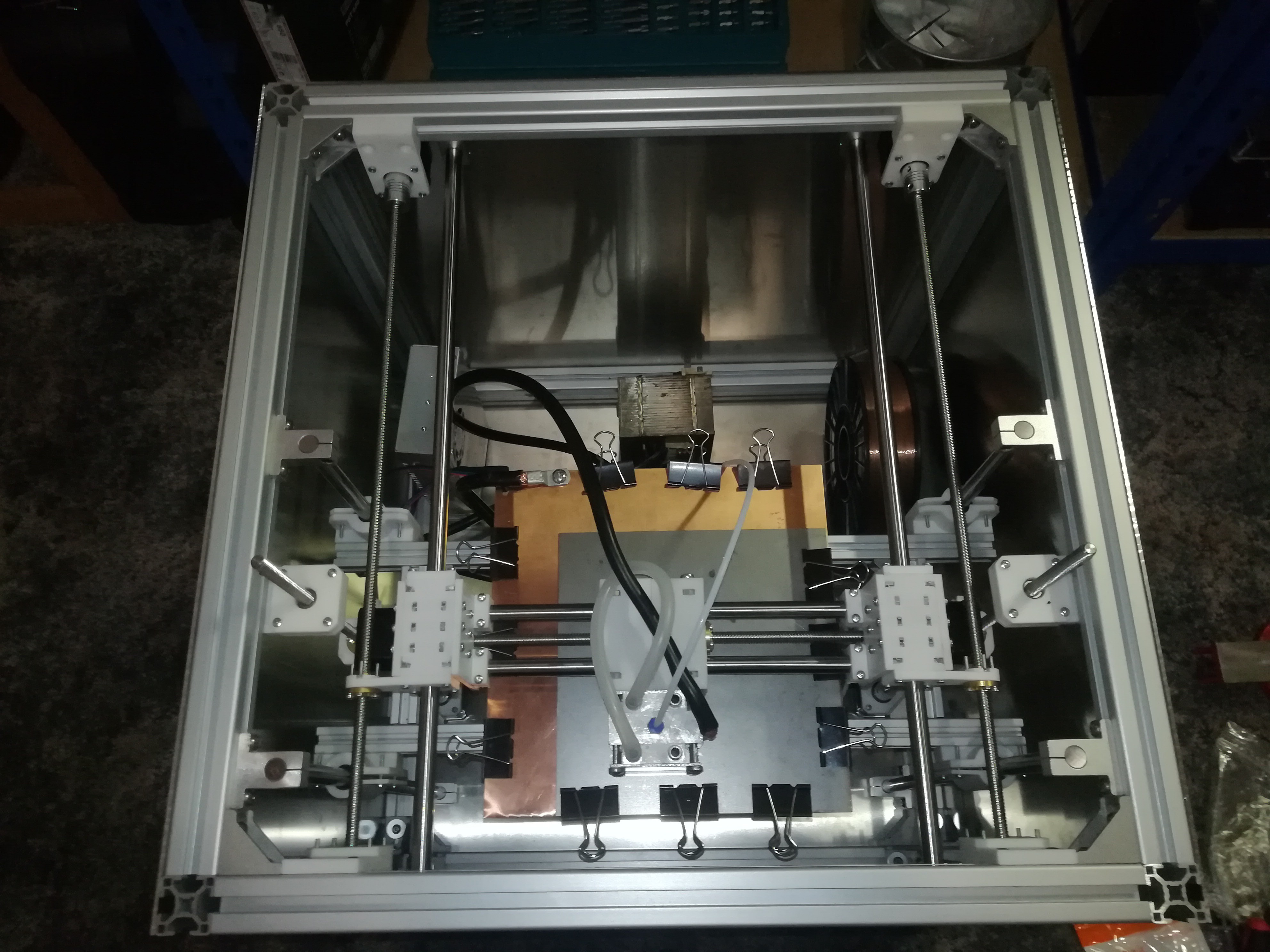
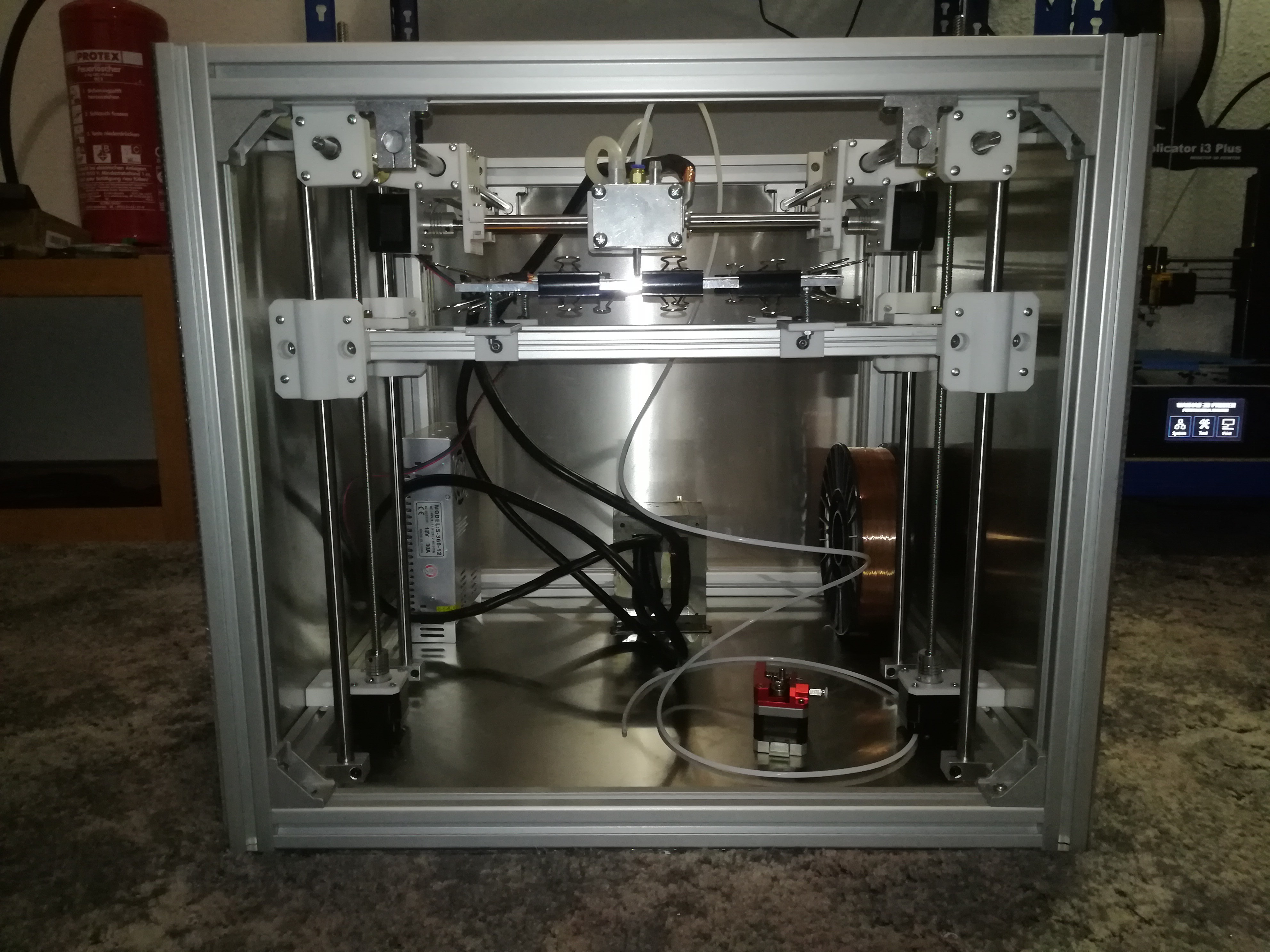
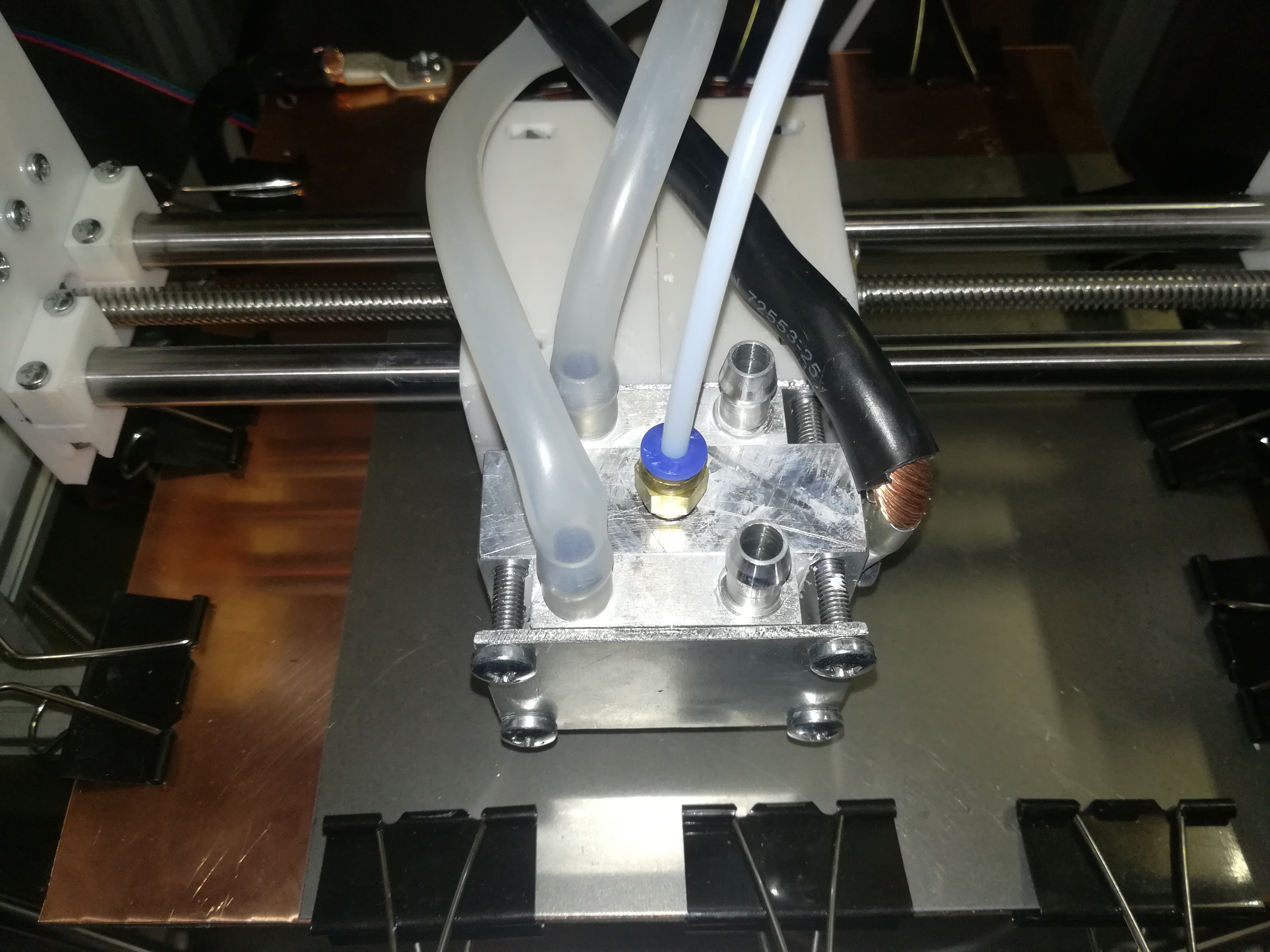
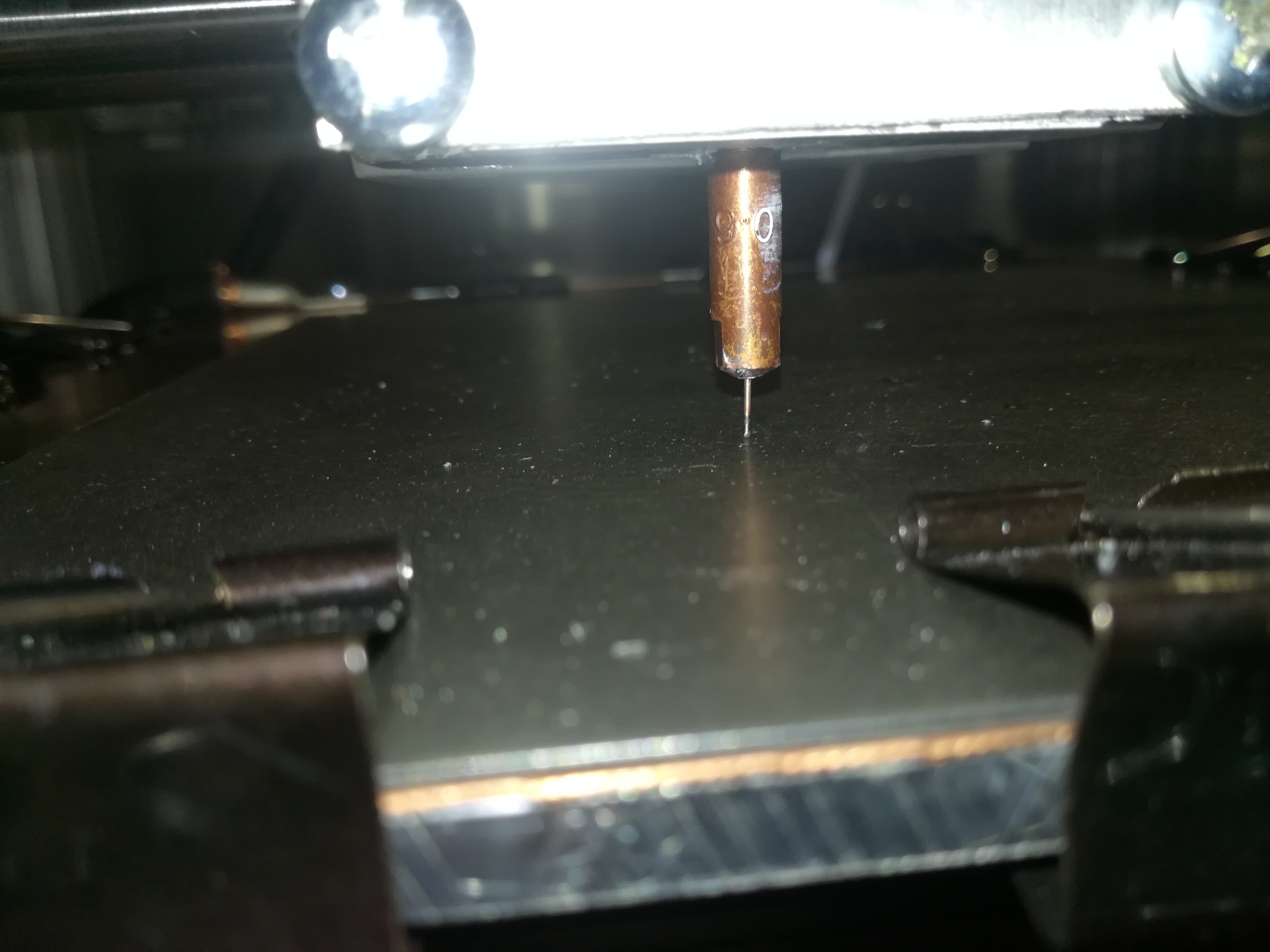
The X, Y and Z axis are finished. For this printer I want to test a "all axis threaded" design because I never used such a design before. The new watercooled hotend/toolhead is also ready. What's left are the E axis and the electronics. They should be ready in the next few days.
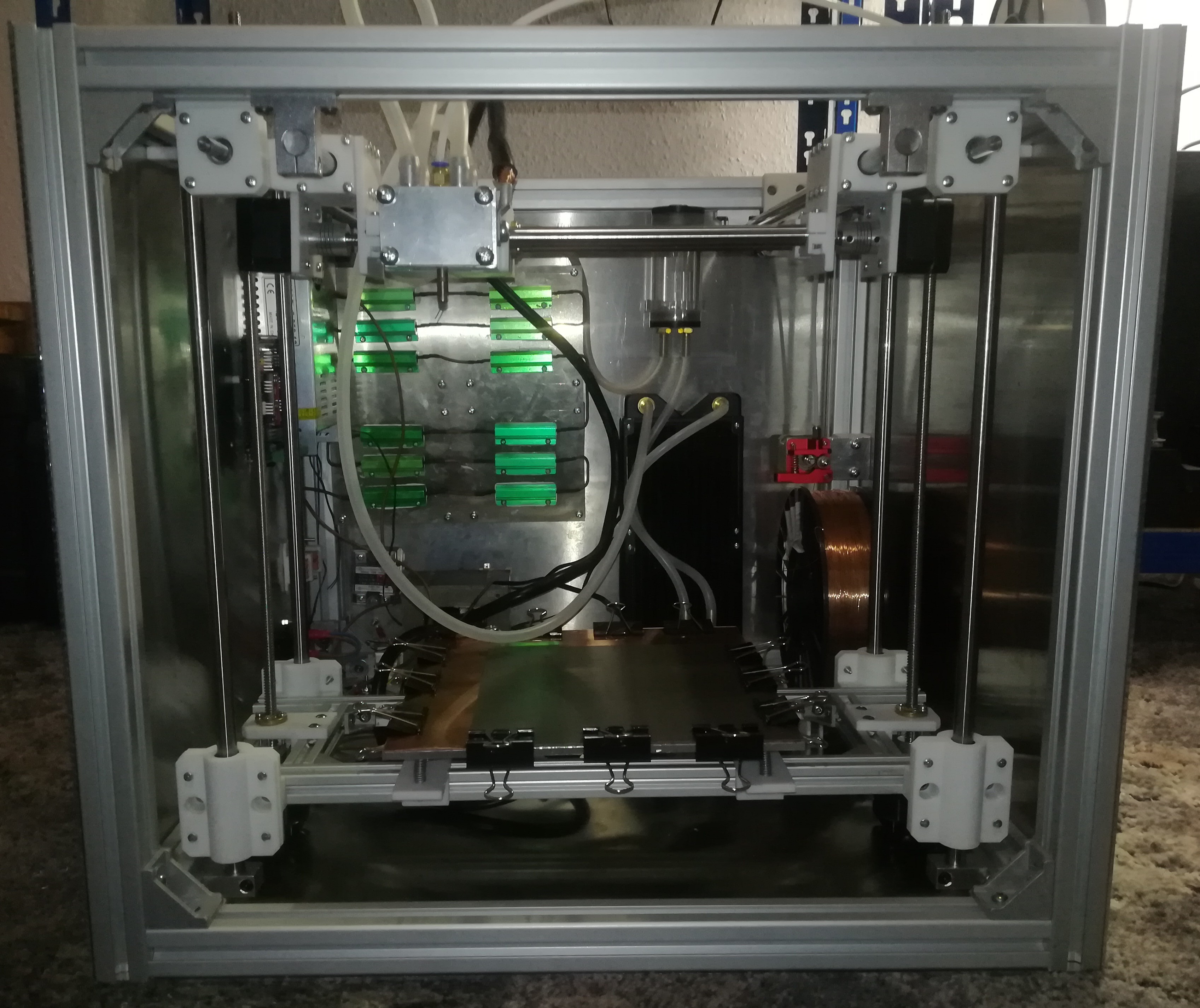

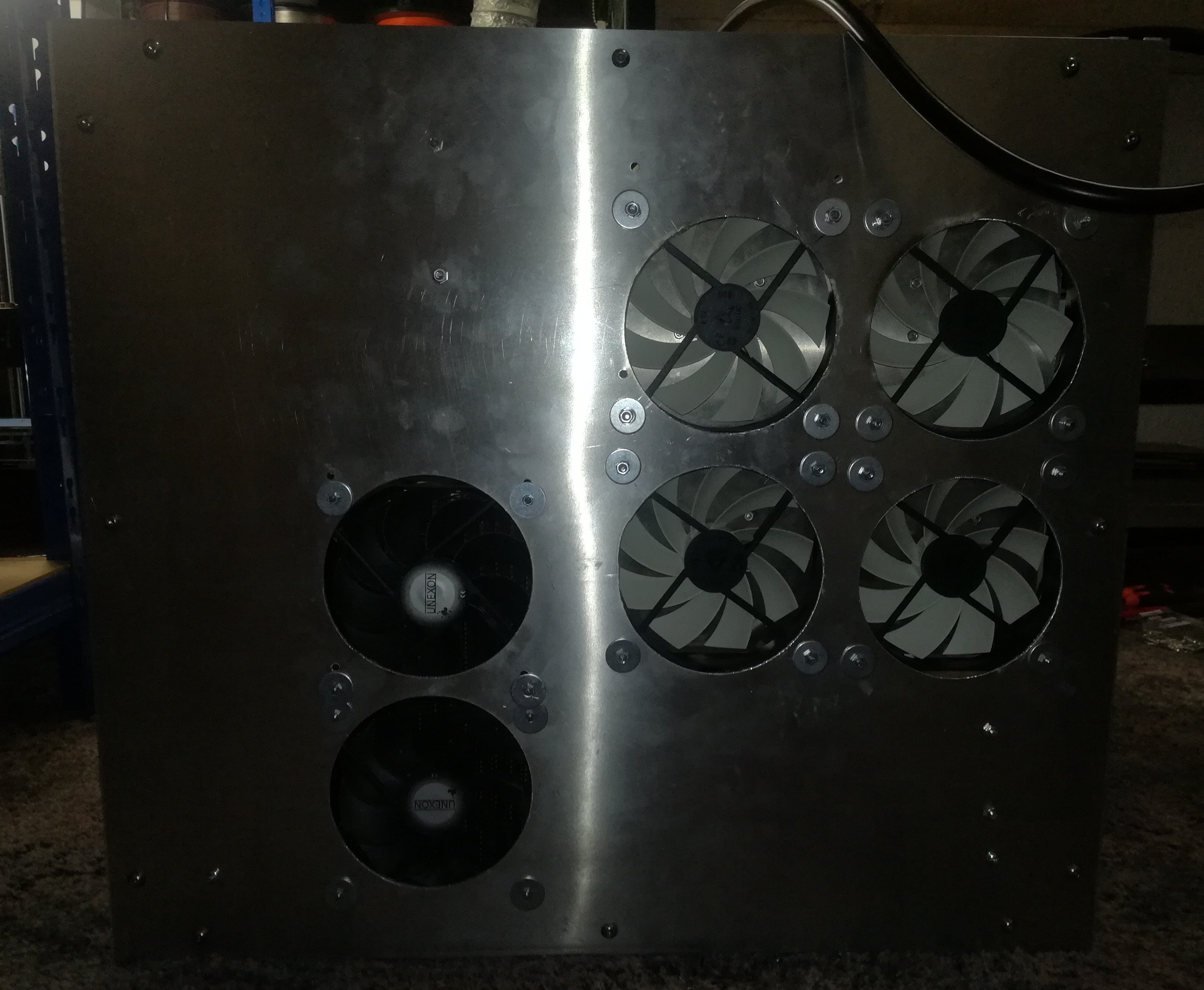
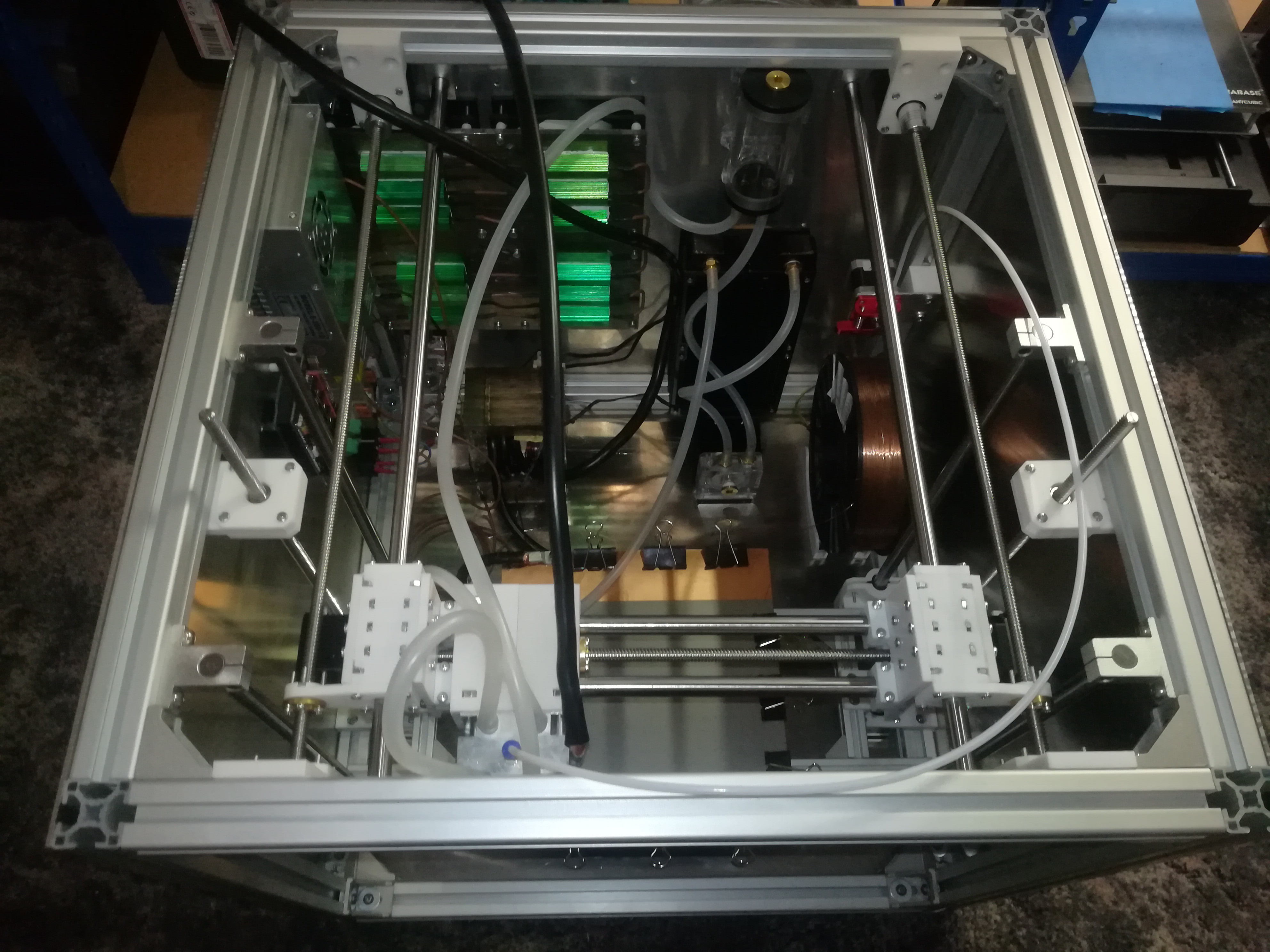
Maybe I must find another place or a housing/case/container for the wire filament spool because it is conductive and connected to the work current and if something goes wrong and the wire unwinds itself from the spool and touches the buildplate or the electronics, bad things could happen...
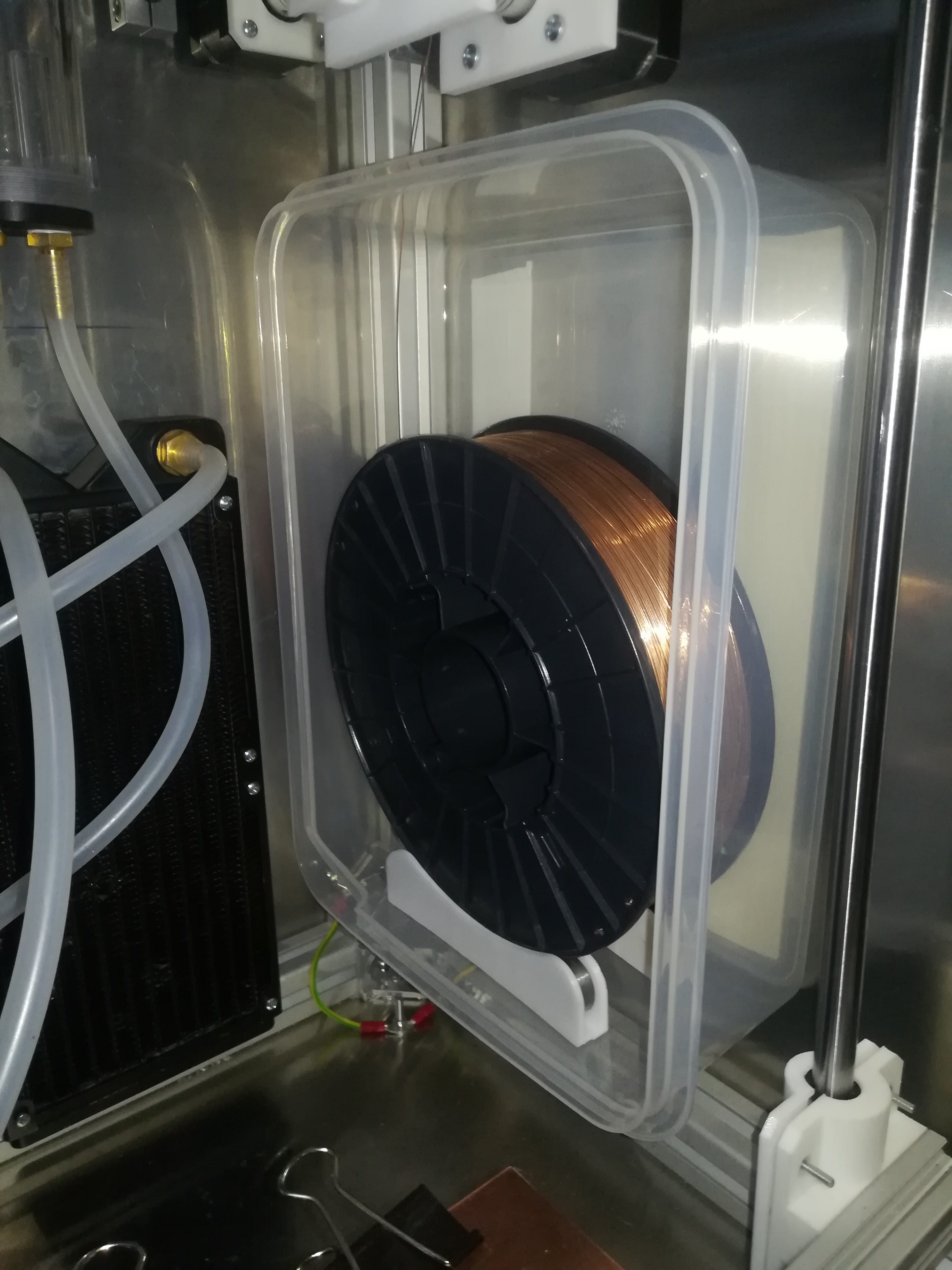
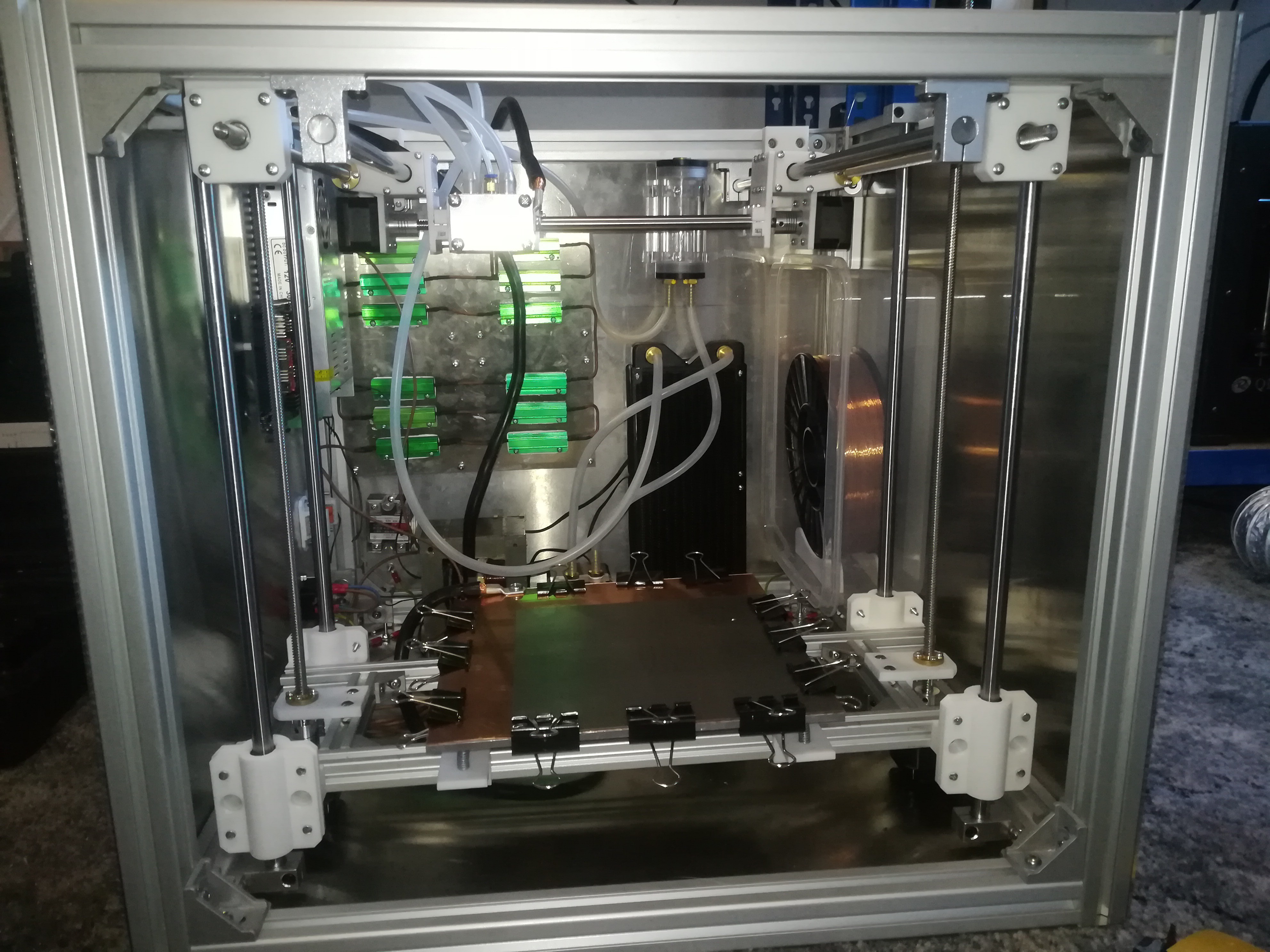
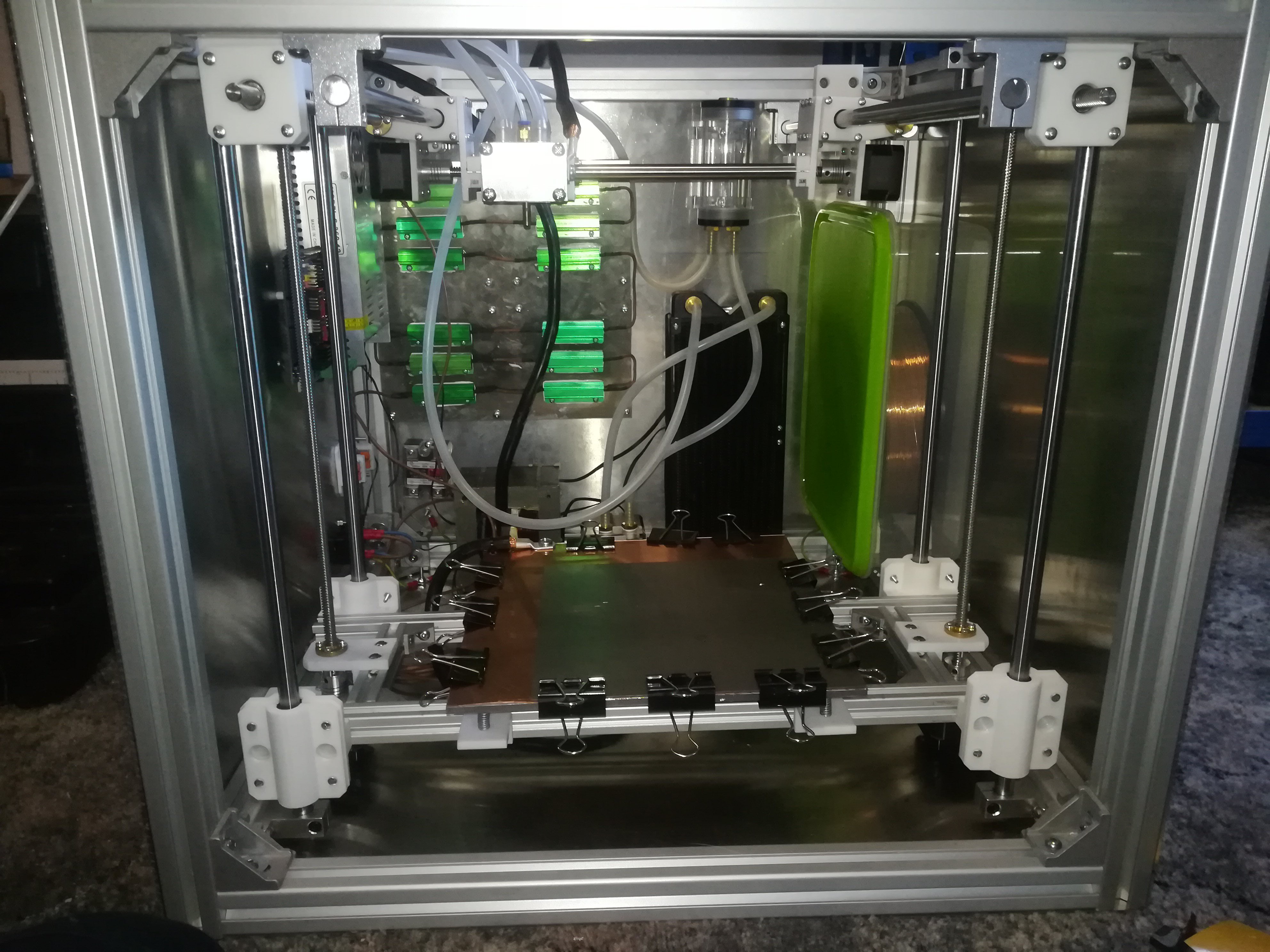
So I put the spool in a box taped to the side to keep it isolated from the rest of the printer.
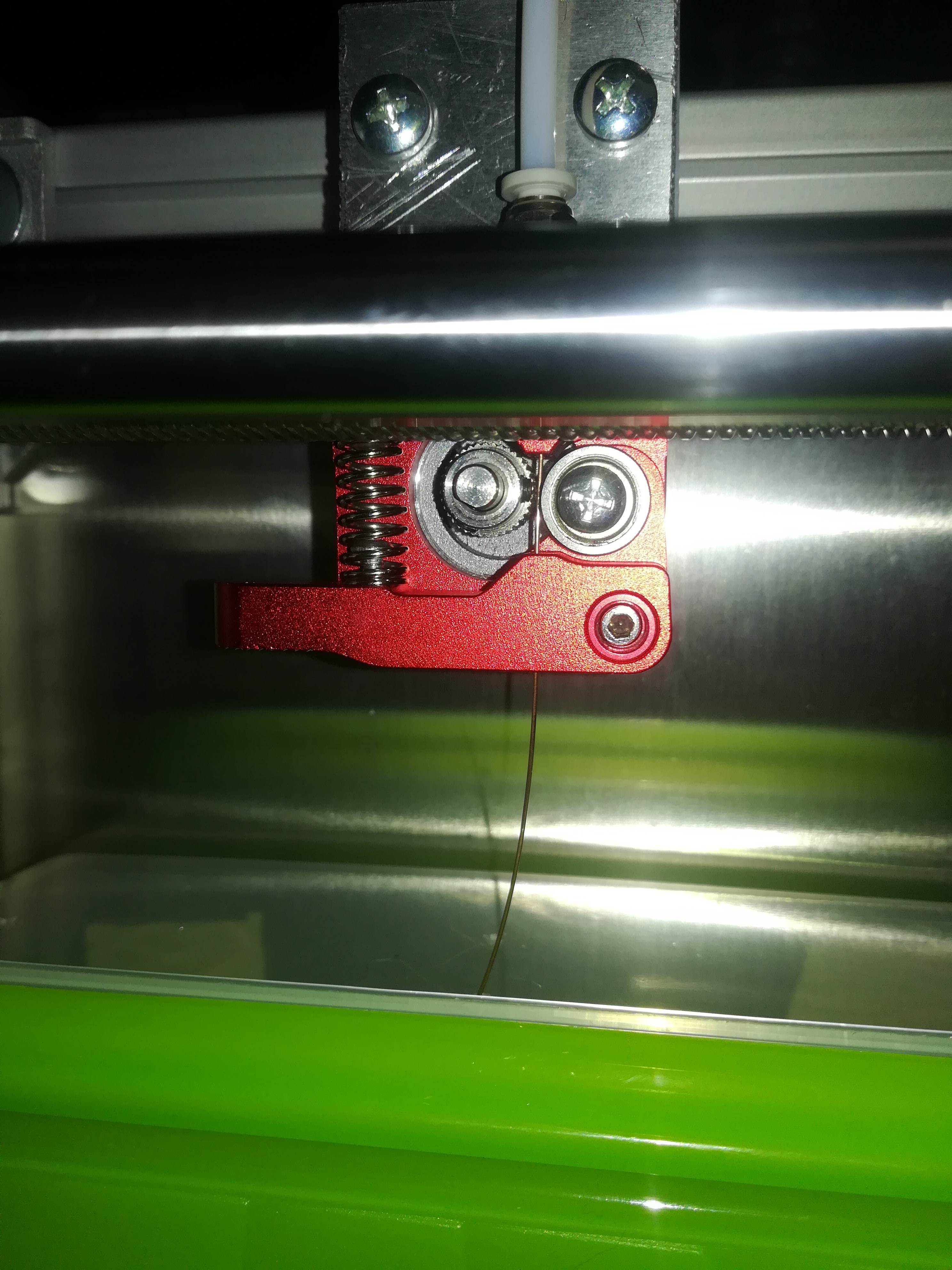
A Bowden Extruder Feeder.
I replaced the U grooved bearing with a normal one so that it can grab the wire.
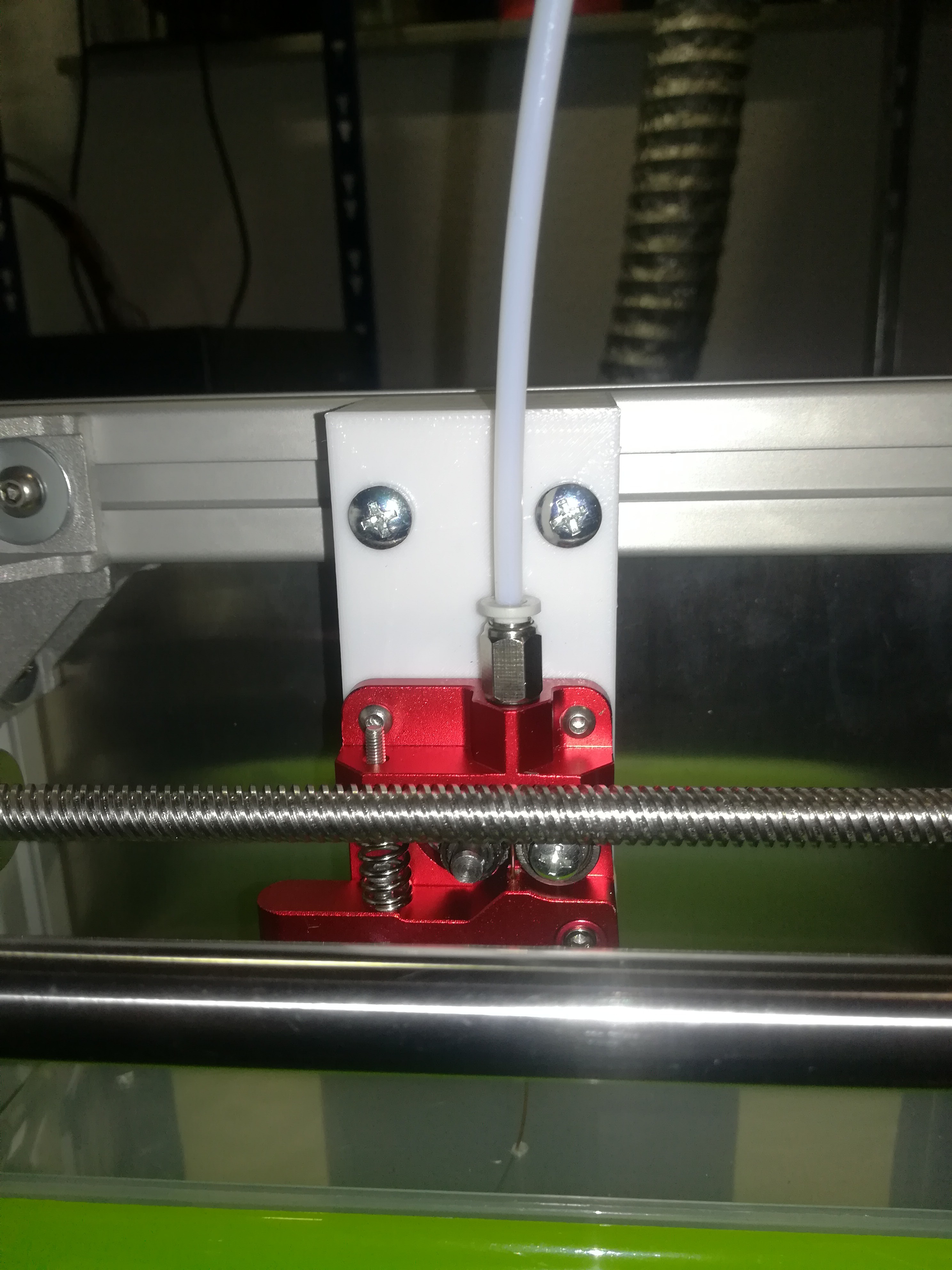
Replaced the aluminum bracket with a PLA bracket to isolate the motor housing from the rest of the printer.
The work current should now be completly seperated from everything else.
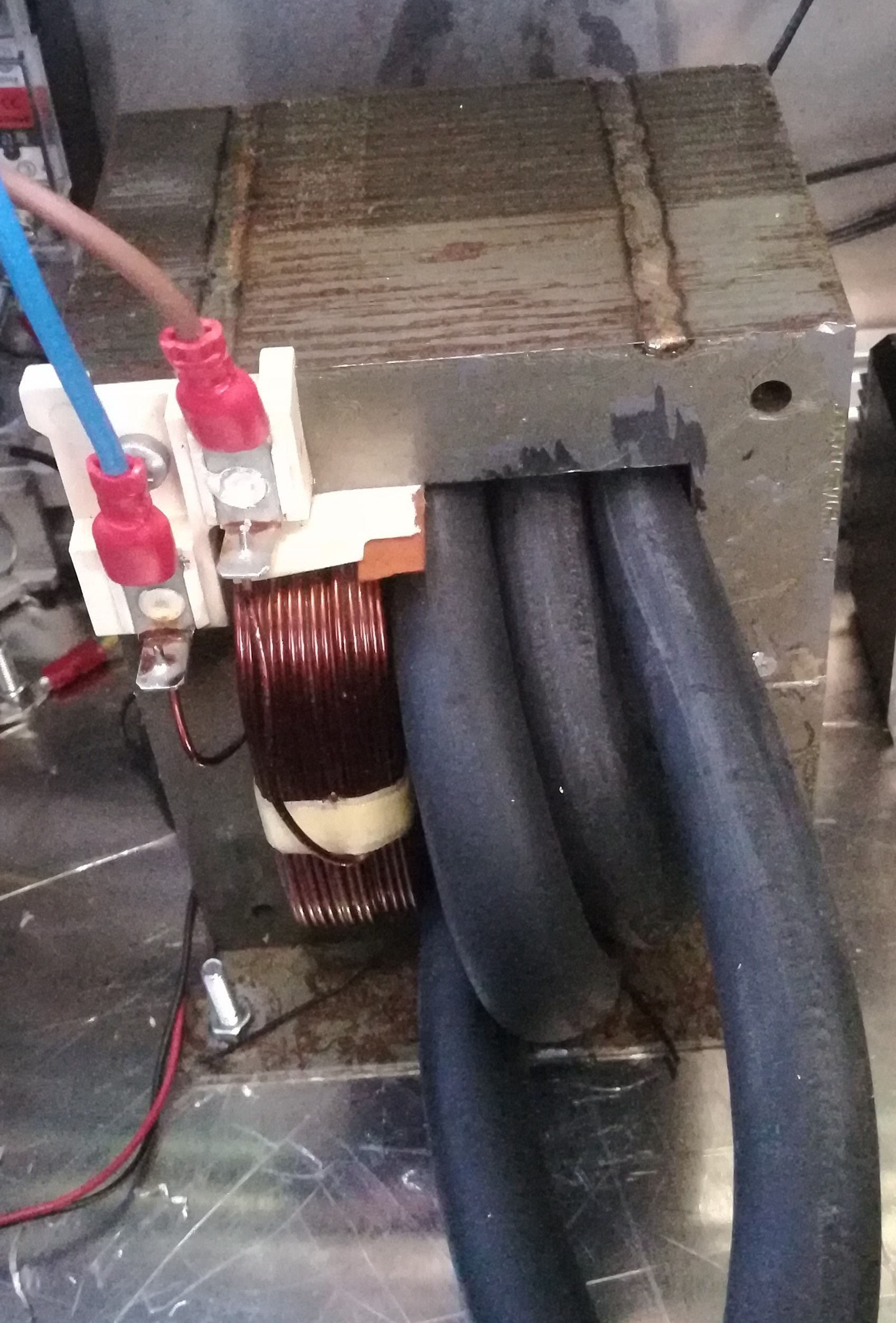
Replaced the 25mm² cable with a 50mm² cable which should stay cooler than the old one. The new secondary has as many windings than the old one and I measured 3V on the secondary by applying 230V on the primary.
 Dominik Meffert
Dominik Meffert
Discussions
Become a Hackaday.io Member
Create an account to leave a comment. Already have an account? Log In.
Hmm, you still have to watch for separation between stepper windings and casing. If your working current is from transformer and below 50V, you shouldn't have problems. In future if there are problems, I would suggest using extruder where stepper has plastic gears which turn feeder wheel. Also that exit point of wire will soon be a nice long slot, I'm planning a machine which uses plastic thread to cut other plastics, it's surprising how good a thread is at cutting (melting away) plastics.
Are you sure? yes | no
Hi, yes I thought about the working current maybe damaging the controller board when something goes wrong, but I measured the stepper motor contacts and it seems like the windings are isolated from the casing. The working current has also no second connection to something else but the build plate to close the circuit. Last time I measured 2,75V before adding the resistors, so it should be even lower. Maybe I could add some sort of metal tube to prevent the wire from cutting the box.
Cutting plastic with plastic sounds interesting. Are you using plastics with different hardness for cutting?
Are you sure? yes | no
Yeah, windings should be isolated from casing (otherwise casing would be a pole), I thought that voltage would be higher.
As for cutting, I used strand from typical plastic rope (I believe it's poliamid) to cut polistyrene (CD case), but simple thread for sewing works too. It just needs some speed, then it melts cutted plastic away with friction. You can try it with bare hands, but it's hard to control with fine thread. I used it to cut some cd cases into guitar picks, was much more controllable than metal saw and I didn't have any better tools at that moment. Currently I don't have place to hack, but will make gear cutting machine using this idea later this year (or about any shape, like wire-edm but for plastics). For durability I plan on using fine kevlar thread, should have kerf of about 0.1mm.
Are you sure? yes | no
Sounds like a good idea. Could be useful for cutting in cases where lasers are too dangerous or would melt too much of the material and cnc routers are too loud or expensive like in an office or apartment.
Are you sure? yes | no
Yeah, just now I've realised I could cut shapes from PVC without fumes. I have several kilograms of credit card sized plastic cards (leftovers from sim cards, my company uses small sims, but we have them in those full sized cards) and considered making some cutting press to make some shapes. Maybe you have some idea what to do with 5k sim card carriers (like this: https://media-cdn.seeedstudio.site/media/catalog/product/cache/9d0ce51a71ce6a79dfa2a98d65a0f0bd/h/t/httpsstatics3.seeedstudio.comseeedfile2018-06bazaar850998_img_0016a.jpg , but left over after sim is taken out ).
Are you sure? yes | no
Hm, 5k are a lot of stuff. Maybe you could cut out a form which you can use as scraper for silicone joints or soft spatula tip for workpieces which would be scratched by using a metal one.
Are you sure? yes | no